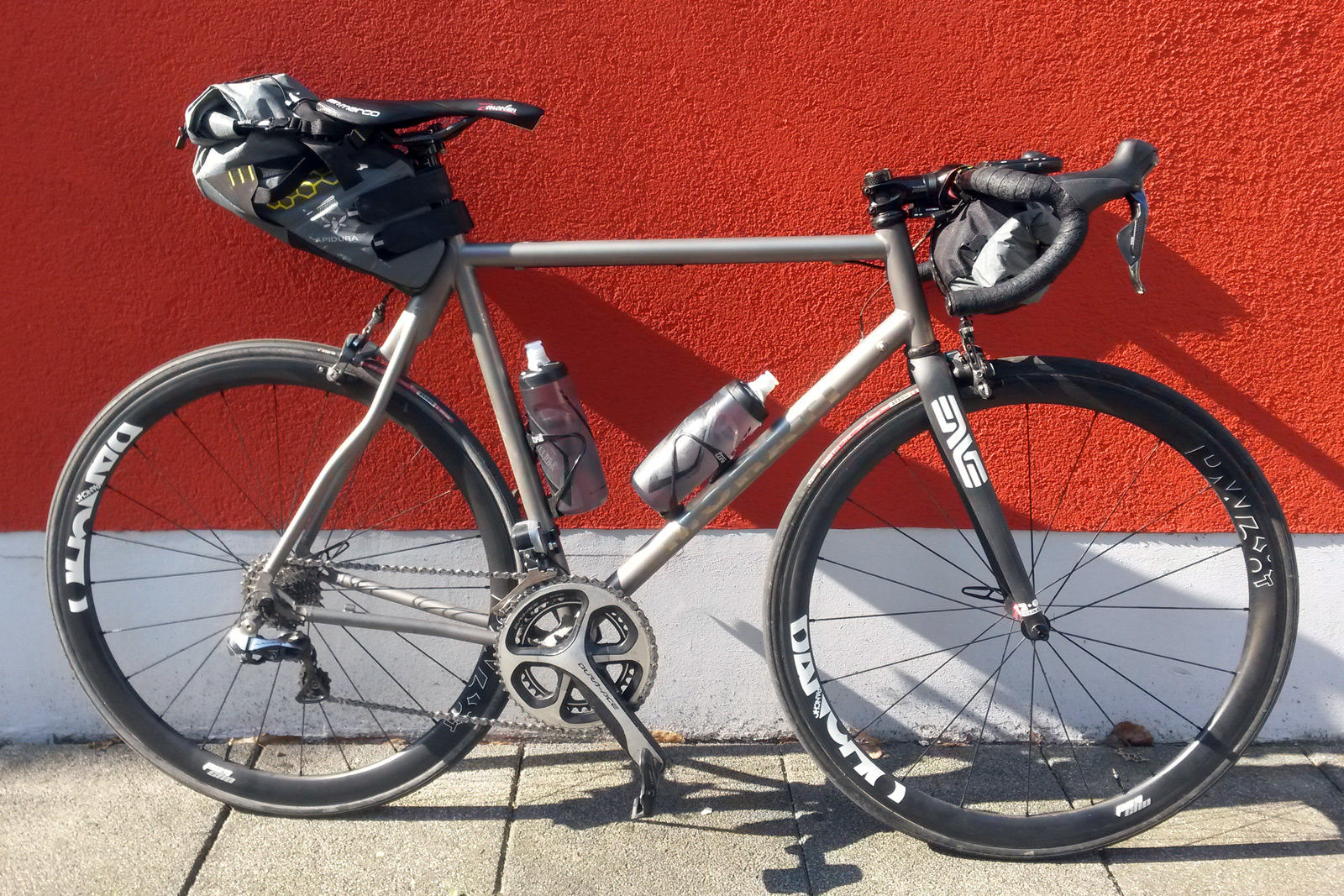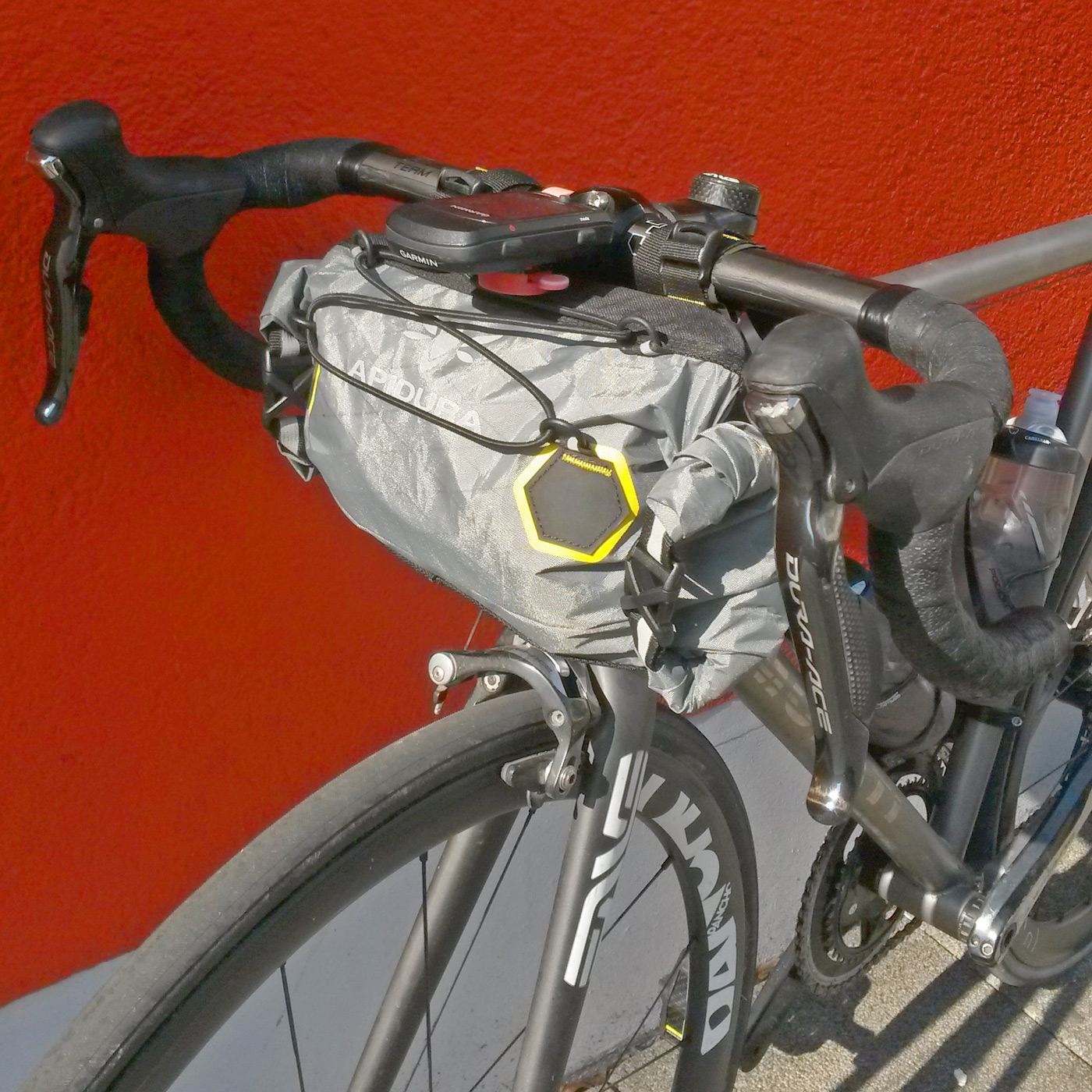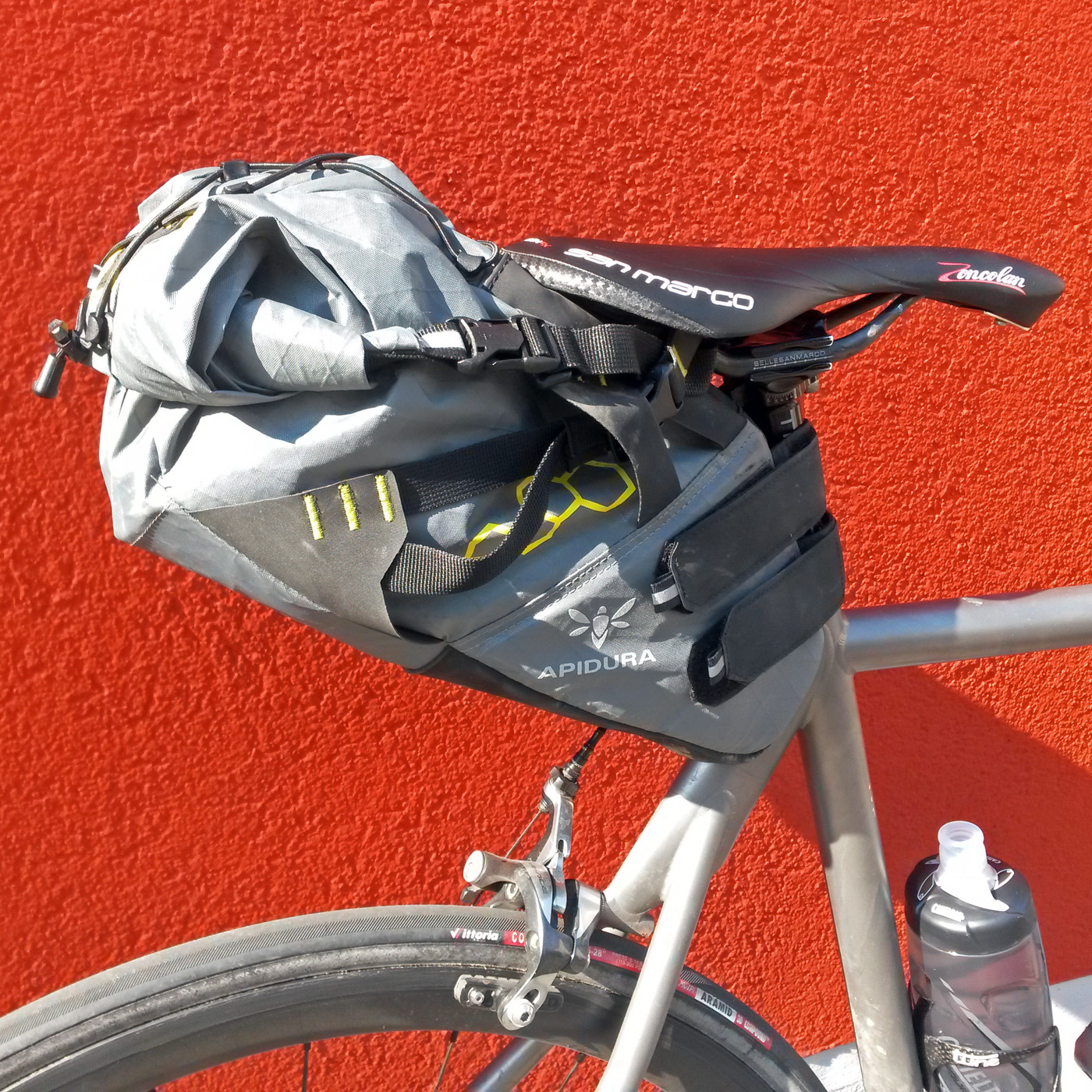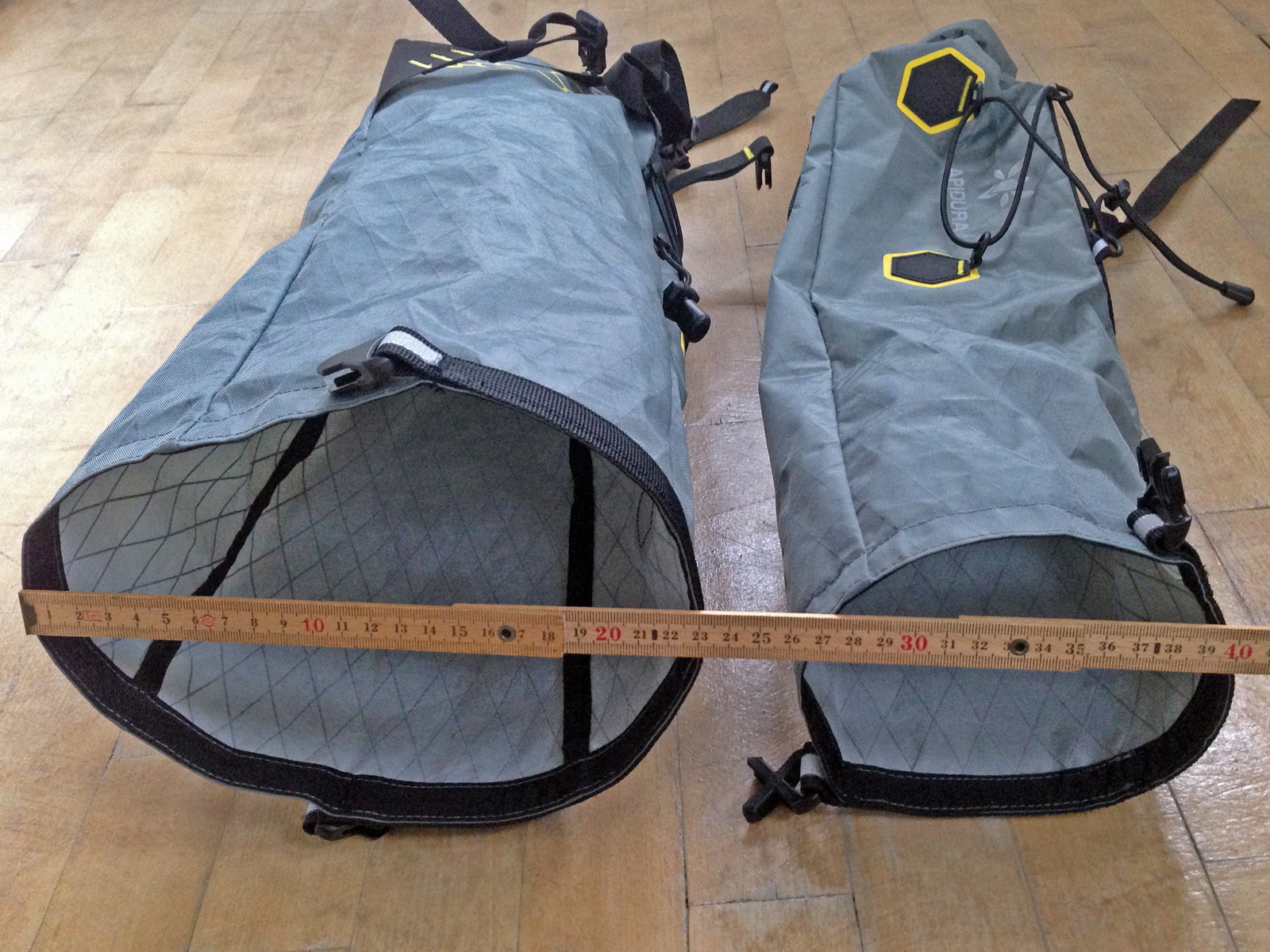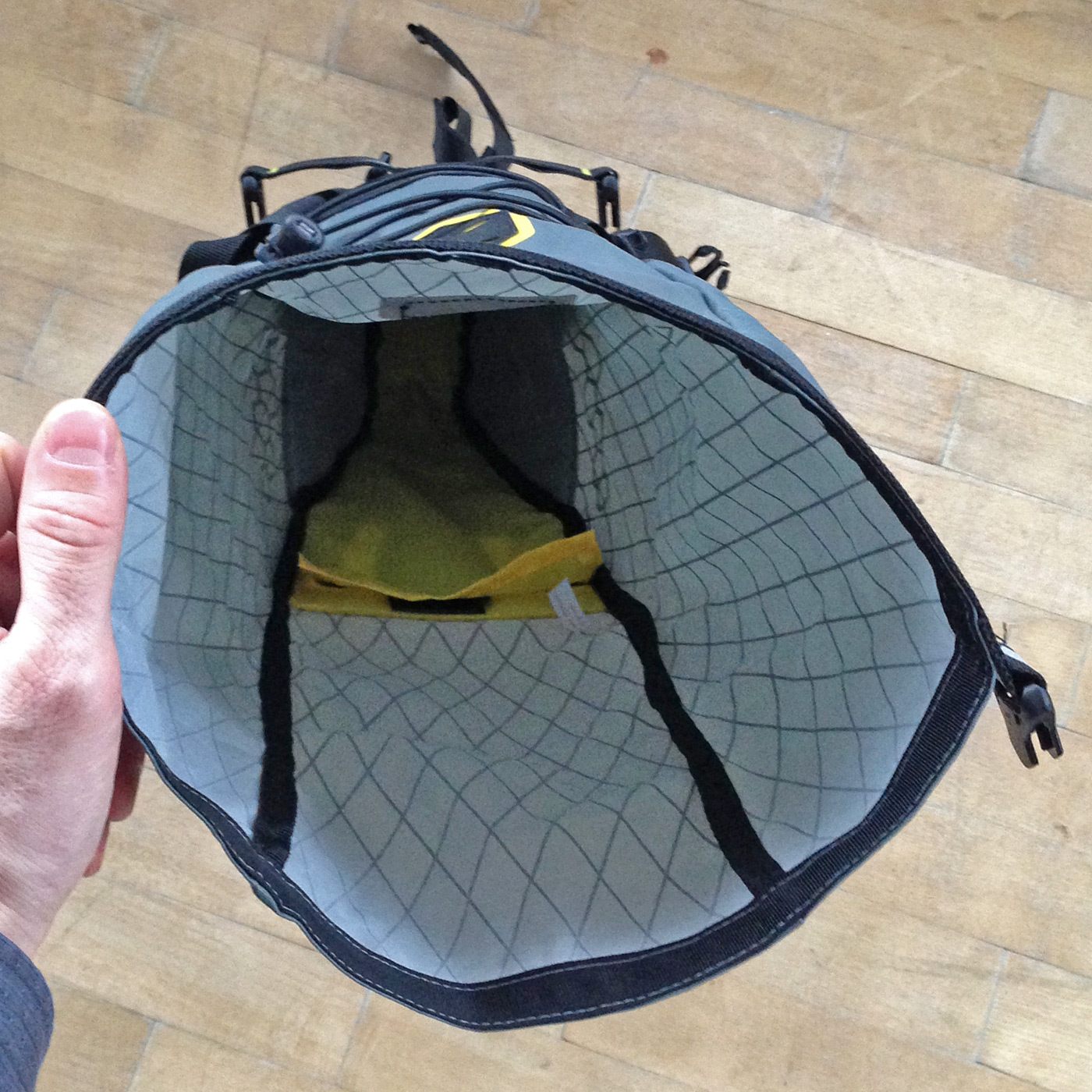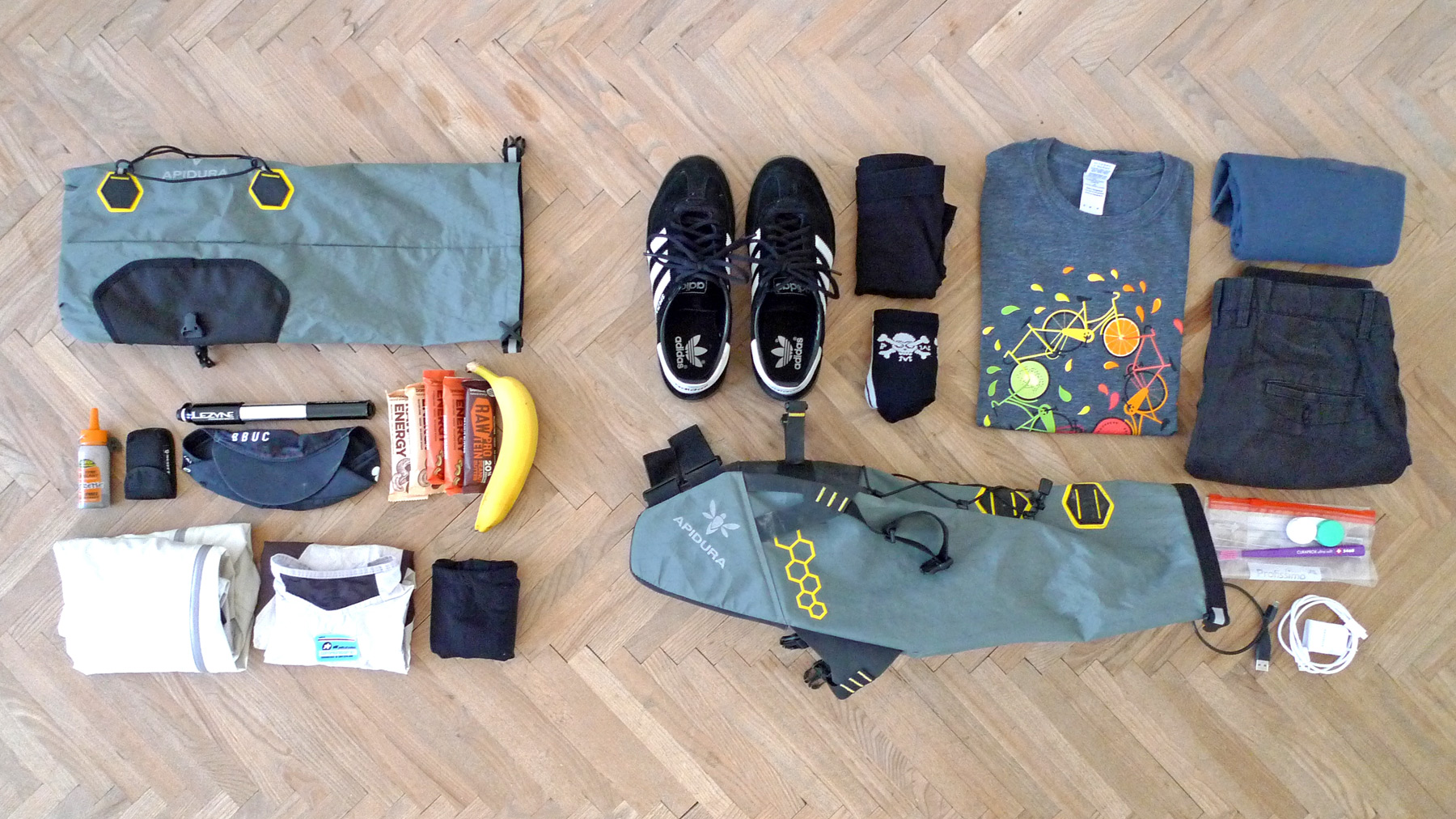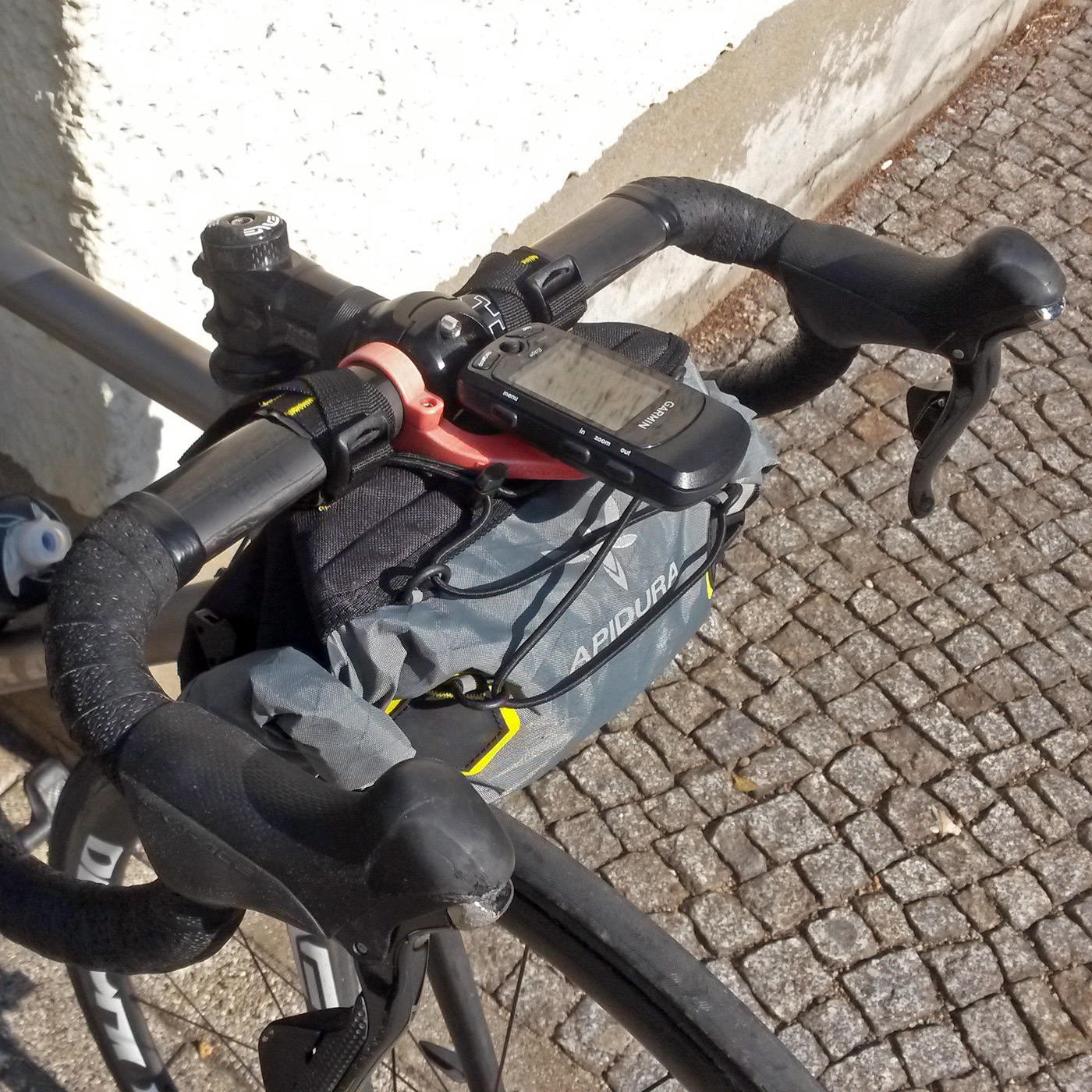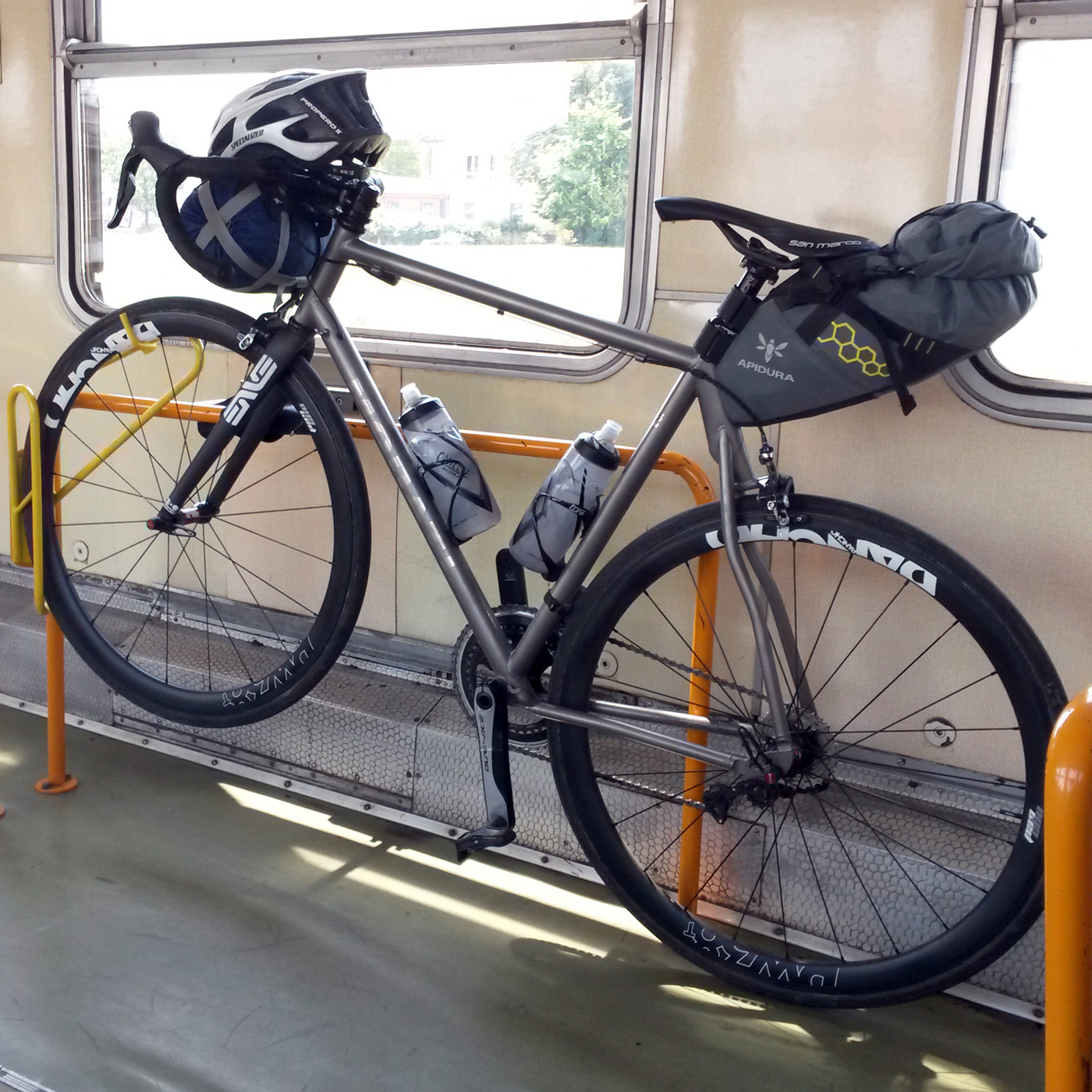At the beginning of last winter, we gave our first impressions on Apidura’s lightweight take on bags for bike touring. Since then, we’ve had a chance to take the bags out on several adventures on both road and trail, and have gotten a better sense for light bikepacking. Until we got ahold of these bags, most of our touring had been either the extremes of full racks and panniers, or just lashing a stuff sack to the handlebar and under the saddle. But two of our testers have realized that since most of our trips are just overnighters, having a proper secure set of bags for these short trips has made packing and riding with them even easier.
Come take a closer look at see what we’ve stuffed inside…
Lets do a tiny recap… Apidura seems to be all about traveling light, so almost all of their products are designed for light touring. Their goal is to eliminate the extra weight and complication of racks (and to fit more bikes, especially more light bikes that don’t get rack mounts) and thus all of their packs attach securely to the bike without outside support.
The bags we have had on test for the better part of a year are the 85£, 198g, 9l Compact Handlebar Pack and the 85£, 356g, 14l Mid-Size Saddle Pack. Our thoughts going in were that we would be testing them primarily on road and cross bikes, so a smaller bag on the bar made sense between the drops, while a medium sized rear bag would give us plenty of space hopefully without veering into it rubbing our legs or moving around too much.
The handlebar pack attaches straight to the bar with a pair of straps with plastic ladder locks. They held the bag pretty securely, although it was mainly due to a tight fit with the straps. They were very tight to release the first few times. But since the ladder locks appear to be a standard part designed for a mostly straight strap alignment, wrapped against the curve of the bar, they loosened a little bit over time, and would probably benefit from a secondary retaining solution, like a simple strap or rubber band to hold down the extra strap.
The compact pack fit fairly well under out-front style GPS mounts and pressed against the shift and front brake cables keeping it off the headtube. If we were to size up to the larger pack, it would certainly have interfered with both the GPS the brake/shifter cables. In our typical road and cross setups the cables and GPS mount offered a bit of support, but on a mountain bike the handlebar is more prone to rocking around front-to-back. As a result we ended up packing mostly lighter items on the handlebar, even though more front weight distribution would have probably been more ideal. It would be nice if the pack (especially the larger one) had some method to strap to/brace off of the stem to make it a bit more stable.
As for the saddle pack, only on very rare occasion did it touch our legs (actually only with one tester.) It seemed like a rider with wider thighs and who moves around a lot on the saddle was more likely to brush up against the pack. Even in the rare instances that it did occur, it was never enough to be uncomfortable or to abrade a pair of shorts. We were actually slightly surprised at how big the pack is, that the tapered shape at the seatpost meant that even the wide velcro straps stayed out of the way. Those 2 velcro straps keep the pack secure on the post, but while there is plenty of adjustability on the other straps to attach the bag, the connection around the seatpost seemed like it favored oversized posts.
On both bikes were tested with 27.2mm posts, we cinched the bag down all the way and felt like it would be nice if it was a little tighter. The saddle packs do require a decent amount of clearance, both between the saddle and tire and in seatpost extension. On level top-tube bikes we were right at the limit with this road bike (where the pack rested nicely against the monostay) and had contact with the seatpost binder on the cross bike we introduced the bags on. Apidura lists the clearances on their site, and smaller-size, level-toptube bikes could have issues. As we’ve also seen on non-traditional saddles with single/mono-rails like the Ritchey Vector Evo rail, the packs need a tradditional double saddle rail to attach properly.
Looking back now at the size packs we selected, the saddle bag choice was perfect. The large, 23cm across opening and a tapered conical shape made it easy to stuff it full, and at more than 60cm long when open and 45cm when closed there was room for even decently long items. Then by rolling it down all the way, it was possible to get it down to around 30cm in length making it pretty flexible for small or large loads.
The smaller diameter opening (and the straight tubular shape) of the compact bar bag on the other hand made it more difficult to fill up. We had thought the smaller bag would be better suited to road bars, giving more space for all hand positions, but we ended up rolling the ends down to keep the width around 32-35cm for more space around the hands in the drops, which limited the carrying capacity quite a bit. The larger bag can just as easily be rolled down to the same width, but by being 20cm across, it offers 2.4x as much space.
The tubular shape also made it hard to pack it evenly when we had items other than compressible clothing. The dual sided entry made it a bit easier to put things in from both sides, but with a drop bar we still pretty much had to remove the bag each time to pack and unpack. Our thought is that making the diameter a little bigger and adding some compression straps like a stuff sack, might make it easier to load and unload.
Pack contents for a typical two-day summer weekend trip (the red background photos above), staying overnight with a friend: Prague-Dresden-Prague
Handlebar Pack for things needed en route: snacks, pump, multi-tool, tire repair, vest, extra cap, rain jacket, arm warmers.
Saddle Pack for shoes and clothing for the destination city: sneakers, shorts, t-shirt, socks, underwear, long sleeve baselayer, toiletries, charger with cables.
Beside proper bikepacking/touring trips, we’ve also used the bags for several trips when traveling with the bike by train and in getting to and from races. In either case we tended to pair the packs on the bike with some small backpack or other bag, but were able to spread the load and eliminate the need for any big bag, even for up to a week when we were using a bike to get around.
For short trips to cross races (and to ride to a course for practice) we were able to stuff a full winter dry change of clothes in the saddle pack, so we could train or race and have a clean, dry set of gear to change in before heading home. And with the saddle pack able to be installed or removed from the bike in less than 3o seconds, it was always easy to drop it with a friend at the start line, and still had a very secure feel.
In the end the Apidura packs were very easy to put on/takle off the bike, even the handlebar bag which required threading two tight straps through the ladder locks. Neither of our testers used the bags in terribly wet weather, just a bit of drizzle and a couple of minor summer showers. The main light gray fabric is apparently a 4-layer laminate called Dimension Polyant VX21 (a mouthful or two), and claims waterproofness. But the seams don’t get taped, and the packs aren’t really 100% waterproof. We sprayed water on the bags, even with a pressure washer to clean them once, and didn’t ever notice much moisture in the bags. But Apidura has taken user feedback into consideration and developed a new set of bags with a completely rubberized fabric and heat-welded seams. We took a look at previews at Eurobike and expect an official introduction sometime soon, and it looks like there will be a full line-up for those who need totally waterproof packs.
We’ve been pleasantly surprised in the growth of adventure touring and bikepacking accessories available in the last year or two. Apidura seems to be doing things well, and these packs have carried a lot of people we know on some long tours across Europe. After using these two for a year, I’m personally not likely go back to a full racks-and-panniers setup anytime soon. That’s mostly because I tend these days to go on trips where I can find accommodation along the way, that is without the need for a tent I’ve learned to pack light. But is also nice to just have the flexibility to take any bike out for a tour – road, cross, or mtb – and to know that the packs will be simple to use and up for any terrain or weather. Now that winter is coming again, next up will likely be some fatbike hut-to-hut snow touring.
